Assessment of the underground bases of the Chinese Air Force (Part 5)
Part 2
Part 3
Part 4
Vulnerability of underground air bases
Of all the available methods of passive protection of airfields, underground hangars are the least vulnerable to the effects of conventional and nuclear weapons and, therefore, are the most attractive choice in the conditions of a widespread worldwide precision weapons. And with the modern spread of orbital and airborne reconnaissance and observation assets, the hidden operational training of the aircraft provided by underground hangars is much more valuable than when they were originally built.
Thus, modern anti-bunker weapons, using both traditional and more modern thermobaric combat units, can be divided into several classes with different penetration abilities.

Bombs of small caliber и standard penetration bombs were designed primarily to destroy highly protected shelters for airplanes and other fortified structures, primarily those built using steel reinforced with highly durable concrete. These ammunition penetrate 1.8-3.6 meters of reinforced concrete, depending on the strength of the concrete and the way they are delivered. Weapons of this size can be placed on the external sling or in the internal compartments of fighters.
Deep penetration bombs were designed primarily for the destruction of underground bunkers and can pierce up to 5.5 meters of reinforced concrete or less, if the bunker is covered with more soil or soft rocks. Weapons of this size can be placed on the external suspension of heavy attack aircraft, such as the F-111, F-15E or Su, or in the internal compartments of heavy bombers.
Large bombs were developed primarily to destroy deep underground bunkers and are modern counterparts of the 1940 'earthquake bombs'. They can be placed on heavy bomber equipped with special devices. This weapon is designed to cause a high-speed shock wave in the rock, which leads to the destruction of bunkers, tunnels and other deeply hidden structures.
"Earthquake bombs" of the past and present
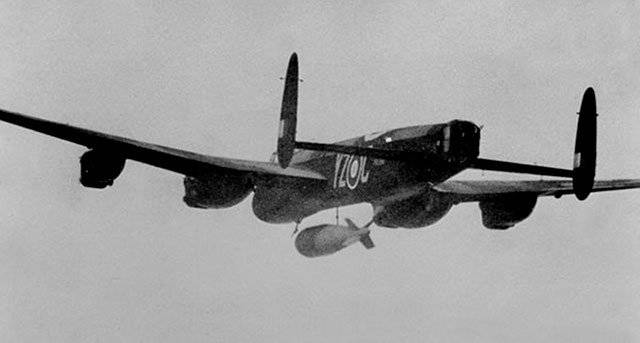
Lancaster squadron 617 of the Royal Air Force drops Tallboy. The aircraft had numerous modifications for carrying and aiming Tallboy and Grand Slam bombs.
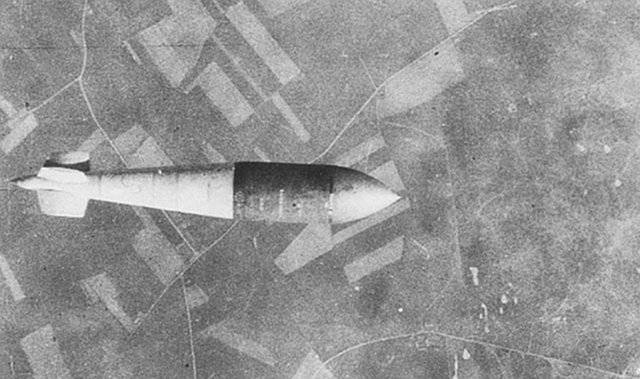
Tallboy immediately after the reset.
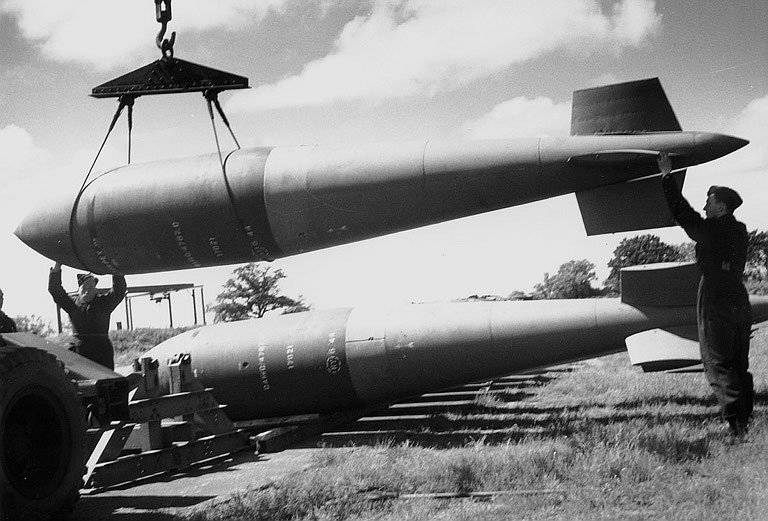
Ground handling 12 000 pound (5400 kg) Tallboy bombs.
30 000 pound (13600 kg) bomb GBU-57A / B, designed to fit on B-1B, B-2A and B-52Н.
GBU-57A / B reset with B-52H.
The tactics of air strikes at airfields today mainly reflect the model of Operation Desert Storm, but using modern aircraft and weapons. In Operation Desert Storm, the F-117A and F-111F coalition aircraft dropped GBU-24/27 / BLU-109B bombs on protected aviation shelters and GBU-10 / Mk.84 on runways and taxiways, and the Royal Air Force Tornado did the same, using the GBU-10 / Mk.84 with laser illumination.
In modern conflicts, the choice of delivery platform will fall on the F-22A Raptor, armed with penetrating GBU-39 / B SDB ammunition and B-2A Spirit bombers, armed with GBU-39 / B SDB ammunition and / or GBU-31 / B / BLU deep-penetrating ammunition -116 / B AUP, since only these types of aircraft have sufficient survivability, necessary for multiple penetration into the zone of action of modern air defense systems.
These weapons and tactics will allow to achieve some effect when hitting air bases equipped with underground hangars, but they do not provide a high probability of irreparable losses.
In the usual steep flight path, these types of bombs can be used to damage the entrances to the hangars and in some cases cause the roof or mountains to collapse above the entrances to the tunnels. There is no guarantee that they will cause significant damage to aircraft and other materiel within the hangar. There are not bad chances that the hangar will begin to function again almost the same day. Damaged runways and taxiways can be quickly restored.
The ability of these munitions to pierce the rock in the immediate vicinity of the entrance to the hangar depends not only on the trajectory of the ammunition, but also on the mechanical characteristics of the rock. South and East China, where most of the underground hangars are located, has many dense igneous rocks, many of them with high fracture toughness.
In case the autopilot software of the ammunition allows a horizontal or very flat flight path and the entry location allows it, then the weapon can be programmed to horizontally defeat the entrance to the hangar and even deep inside the hangar. This method of attack, especially if the warhead has a thermobaric filler, is much more likely to succeed, as it can cause a large-scale fire capable of destroying deployed equipment, including airplanes, fuel and stored ammunition. If such an attack succeeds, the underground hangar is likely to be rebuilt, but this will require serious restoration work since the fire will destroy or seriously damage the lining, installed equipment and infrastructure, while leaving hazardous waste and unexploded ordnance in the cavity of the hangar. In high intensity short-term conflicts, this method of attack will make the target unusable during the conflict.
The disadvantage of attacks with bombs "flying through the front door" is that in many places, simply placing embankments or reinforced concrete obstacles in front of the hangar will prevent such attacks. This method is ineffective when the entrance to the hangar is in a deep canyon on the mountainside, but such places allow the installation of reinforced concrete slabs or reflective nets at the entrance causing detonation of ammunition outside the main explosion-proof gates.
At least one underground hangar in the DPRK, created according to the PLA model, has blocking structures in front of the entrance to the hangar.
The opinion that the PLA, being well-versed in both the construction of aerodromes and their passive protection, will not apply such simple and cheap protective measures for particularly important objects is not realistic. The technology and design of shockwave methods and reflective meshes are relatively mature and are within reach of Chinese engineers. China also has many earth-moving machines and experienced builders.
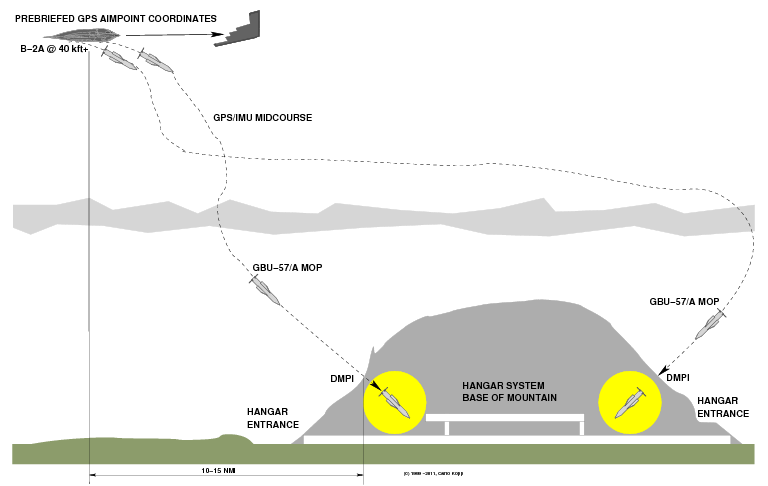
"Conventional" attack fortified structures on top or on the sides. This example shows a rock attack above the hangar entrances. The point is to destroy the tunnel from above above the entrance.
The only reliable tactic of “quick defeat” of underground hangars with a high probability is to cause damage by causing subsidence of the cave cavity, which will make it completely incapable. This can be done using GBU-57A / B anti-bunker bombs or a similar “earthquake” class of ammunition. To do this, in the well-protected airspace of Eastern China, the use of the deadly B-2A bombers will be required. Based on the extensive experience of the Royal Air Force 1940-s using the Tallboy and Grand Slam "earthquake bombs" to destroy underground structures, to ensure the destruction of typical PLA underground hangars will require several accurate hits from GBU-57 / B.
The British experience of using Tallboy and Grand Slam showed that, despite the exceptional penetrating power of these weapons, many targets in unusually hard rocks or under concrete roofs were difficult to destroy, as the bomb could not penetrate dense materials deep enough to achieve the desired effect. This will also be a problem for attacks on underground hangars located in the mountain of igneous rocks such as granites, basalts, diorites and serpentines. Such rocks significantly limit the depth of penetration compared to sedimentary rocks.
The successful tactic used by the British was to "put" a bomb in soft materials next to the target, so that the shock effect hit the target from the sides or bottom, where the target was less able to absorb the load and, as a result, it collapsed.
A study of the PLA’s underground hangars shows that the tunnel’s cross-section has the form of a weighted chain arch designed, as in the construction of bridges and other structures, using arches to transfer compressive loads from the weight of rocks from the upper part of the roof to the undersides of the tunnel. Compressive shock loads from the explosion of conventional bombs or even an airborne nuclear explosion will be transformed by bending the arch into horizontal compressive loads in the rock.
The weakness of this design is that as a result of compressive forces on the lower part of the tunnel walls a tensile load is formed in the floor of the tunnel.
The GBU-57A bomb attack, aimed at the site in front of each tunnel entrance, will create a large shock pulse aimed at raising the tunnel floor, and thereby increase the tensile load on the tunnel floor. While reinforced concrete has some tensile strength, rocky material is usually not able to withstand such a load, and especially if the load is cyclic or repetitive. Consequently, such an attack has the ability to destroy the tunnel from below, blowing up the floor. Even a small level of damage will present difficulties in the further operation of the tunnel, at least disturbing the movement of aircraft.
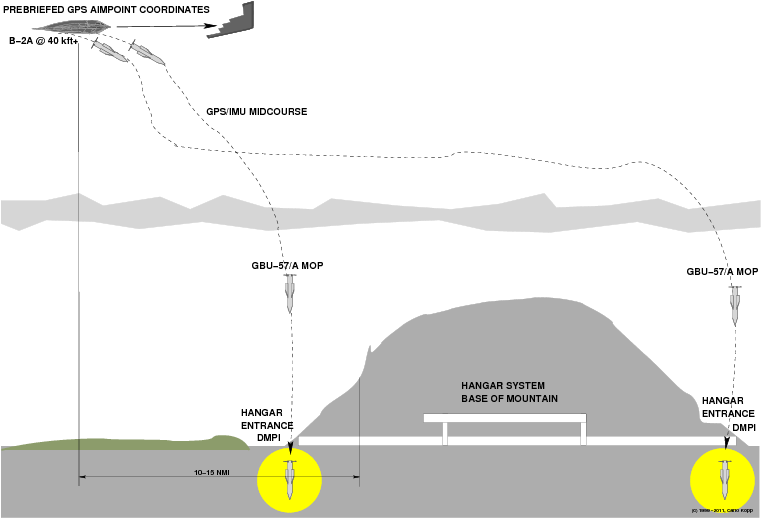
The Wallis approach to attacking fortified structures from the bottom and from the side. This example shows a site attack before entering the hangar. The point is to bring down the tunnel at the entrance or below.
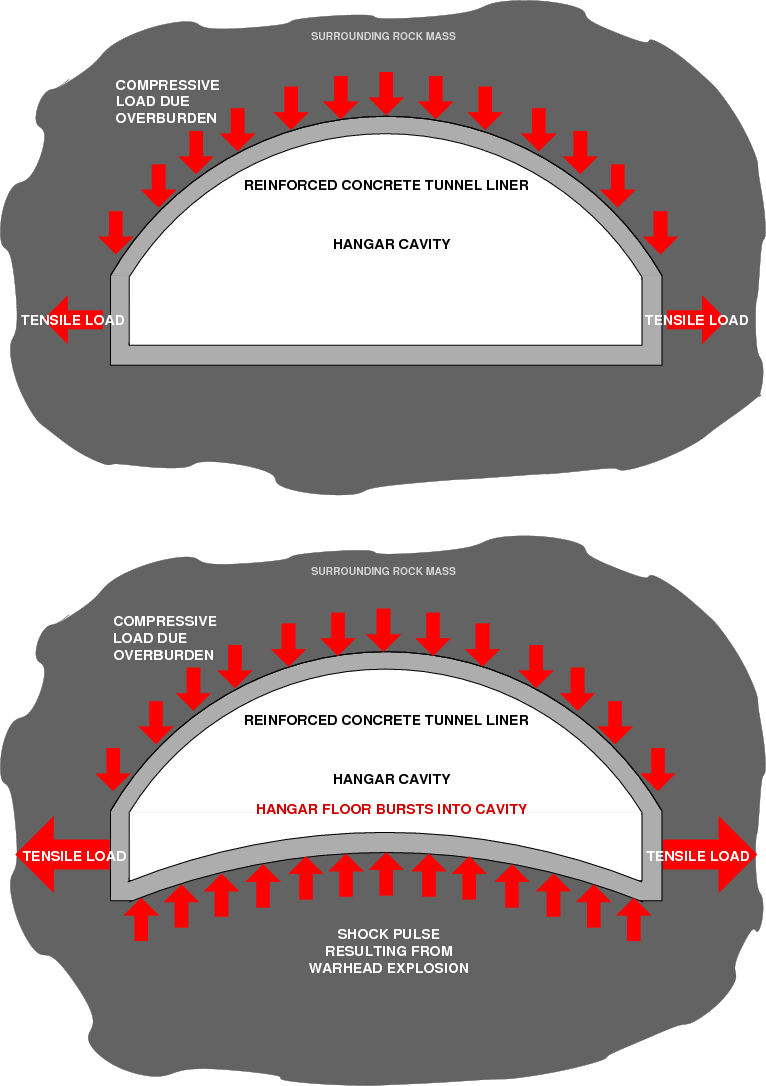
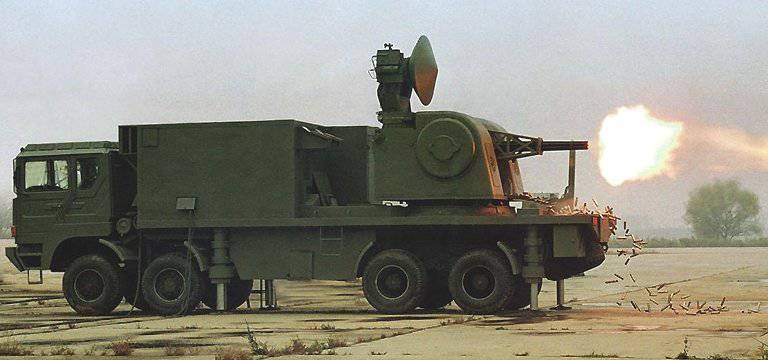
Weapons against high-precision cruise missiles, such as this LD-2000 30 mm Gatling SPAAG (see above), can significantly complicate the destruction of PLA airfields equipped with underground hangars destroying high-precision munitions as they approach the target. The LD-2000 is a derivative of the Type 730 CIWS (see below), a Chinese copy of the Thales Nederland Goalkeeper with a seven-barrel gun Type 730B copy of the General Electric GAU-8 Avenger 30 XX173 mm used on the A-10 Warthog attack aircraft.
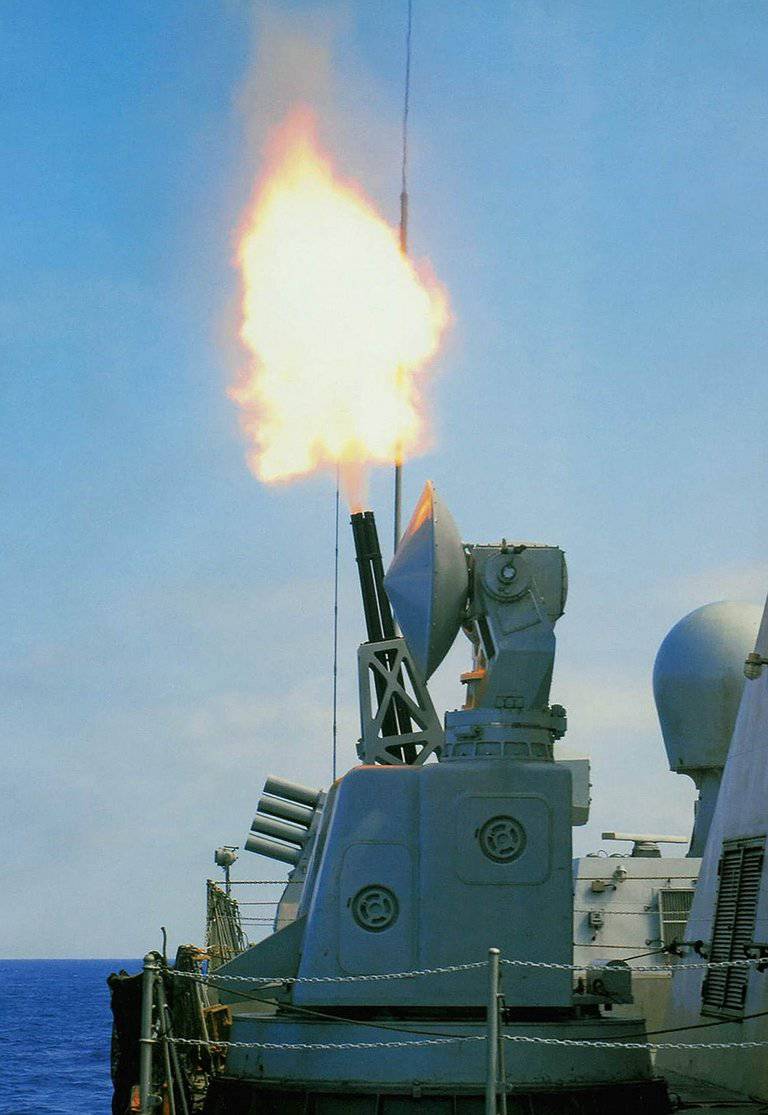
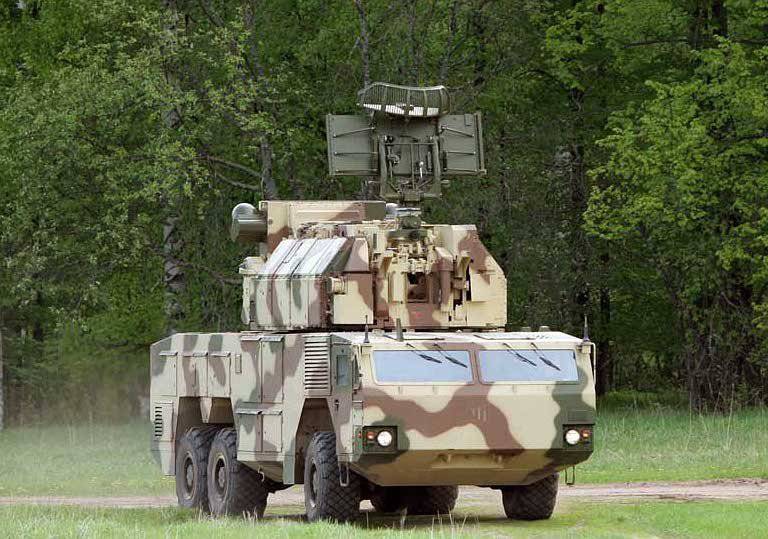
The Russian system 9K332 Dome Thor M2E / SA-15D Gauntlet was specially developed as a competitor to KBP 96K6 S1E / SA-22 SPAAGM Armor to counter the intense attacks of high-precision munitions against critical infrastructure. On arms with the PLA are less advanced 9K331M1 Thor M1 SAM.
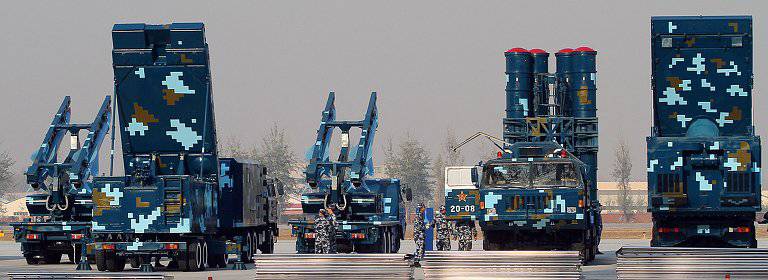
The high destructive ability of large ammunition, such as the GBU-57A / B MOP, easily justifies the use of SAM systems, such as the HQ-12 or HQ-9, to intercept precision weapons. Left: HQ-12 / KS-1A TELS and H-200 Radar; Right: HQ-9 TEL and HT-233 Radar.
The active defense of PLA airfields is a well-developed system using anti-aircraft artillery, self-propelled anti-aircraft artillery installations and air defense missile systems. HQ-7 and HQ-6D / HQ-64 batteries are located in close proximity to airfields. Their task is to repel attacks of low-flying aircraft and cruise missiles. Since in this issue the PLA fully follows the Russian model including the deployment of self-propelled anti-aircraft artillery systems and air defense missile systems to combat high-precision weapons, even the presence of one battery of such weapons at each airfield will significantly complicate the defeat of an airbase equipped with underground hangars.
It is important to note that large-caliber precision weapons such as the GBU-57A / B MOP itself are so valuable and destructive to justify the investment in an air defense system capable of intercepting such munitions as soon as possible after they are dropped / fired. The HQ-12, HQ-9, S-300PMU / PMU1 / PMU2 ADMS are kinematically able to cope with this goal, and the cost of two or more expendable missiles easily pays off, given the damage capable of causing an anti-bunker bomb.
Passive measures to protect underground hangars, in addition to using additional blocking structures and reflective grids at the entrances, include the simple addition of additional entrances to the hangar and access to the tunnels. Most of the underground hangars of the PLA Air Force use only two entrances. Doubling the number of entrances and accesses in the tunnels doubles the effort required to disable these facilities. Such an application of duplication under the Lusser law has the added advantage of further increasing the hangar’s internal potential, and the rock produced can be used to further strengthen the passive protection measures elsewhere in the aerodrome.
From a pragmatic point of view, the network of underground PLA airbases represents a real challenge to the enemy who does not have a large fleet unobtrusive heavy bombers and a very reliable arsenal of hundreds of anti-bunker bombs GBU-57A / B allocated for this purpose. As such, these underground airfields are an extremely important strategic asset and are unparalleled on a global scale, as they currently make a quick massive “knockout strike” at PLA airfields that is operatively impossible even for the United States.
How much effort will it take to disable a typical PLA air base equipped with an underground hangar? This scheme is a hypothetical model of such a base attack, using the GBU-39 / B and GBU-57A / B MOP. Thus, at least 51 small-caliber air bombs are needed to destroy key objects of the airbase and two super-heavy GBU-57A / B MOPs to defeat an underground hangar. While the GBU-57A / B MOP requires the use of a B-2A bomber, small-caliber bombs can be delivered to B-2A and F-22A. At least seven F-22A sorties will be required to deliver the required number of bombs. China’s forty such bases, respectively, will require at least forty times more such weapons.
Overview of all PLA underground air bases
The following criteria were used to determine the presence of underground hangars:
* The hangar should be under the mountain capable of accommodating the hangar;
* Taxiways and, where applicable, auxiliary runways must be of appropriate width and surface quality in order to connect the runway with the entrance to the hangar;
* The geometry and dimensions of the entrance should correspond to the known underground hangars of the PLA Air Force and should correspond to the width of the taxiways; * The air base should be located at the well-known PLA aerodrome with previous history and reflecting accepted design and layout practices;
* Where possible, supporting images, such as KH-4 declassified images, are used.
In most cases, the underground hangar is in the range of 1 to 2 kilometers from the runway.
A certain number of PLA airfields were built at a sufficient distance from a hill, a mountain or a hill necessary for the construction of an underground hangar, but there are no taxiways connecting them to the runway. These bases were identified as bases that do not have underground hangars. Such bases can be equipped with full-fledged underground hangars in the future.
(The original article is a review of the 40 PLA air bases. Here are just two bases. everyone can get acquainted with the full review here)
Yinchuan / Lanzhou MR Air Base
Base Location: 38 ° 29'8.17 "N / 106 ° 0'14.43" E
Main GDP: 01 / 19
Main GDP Length: 2770 meters
Secondary GDP: 12 / 30
Secondary GDP Length: 2000 meters
Unit / Armament: 6 Fighter Squadron / 140 AR (Su-27SK / UBK)
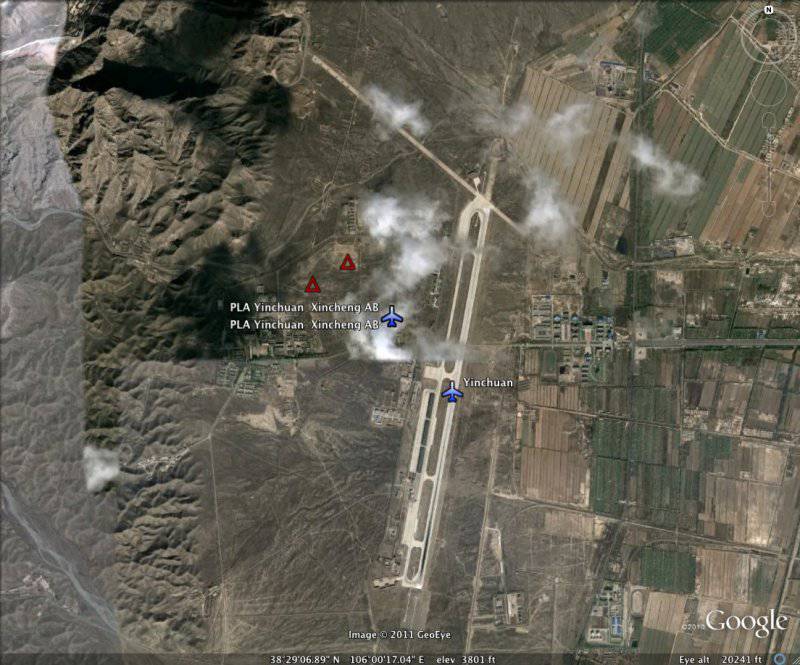
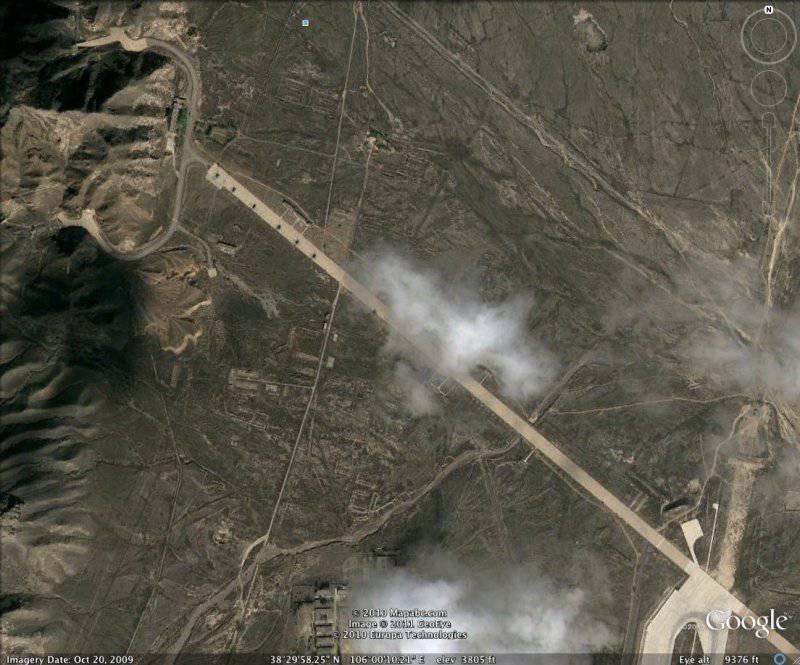
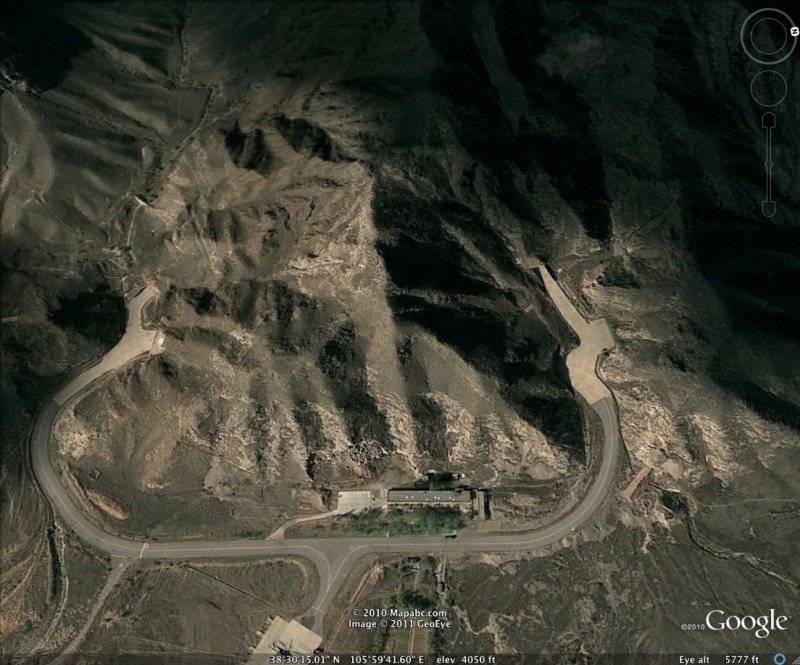
Yinchuan is a typical fighter base with an auxiliary runway. The underground hangar system is equipped with four entrances, two of which are 15 meters wide and two 22 meters wide. Most likely this base originally hosted J-6 and H-5. In the central part twenty-four light shelters are built.
Suzhou West / Nanjing MR Air Base
Base Location: 31 ° 15'46.75 "N / 120 ° 24'8.00" E
Main GDP: 18 / 36
Main GDP: Length: 2500 m
Units / weapons: Unknown / 2хJ-6, 1хJ-7 AR
Suzhou West is a former H-5 Beagle base with two meter-high 22 entrances to the underground hangar, northeast of the runway.
Conclusions
The PLA Air Force has about forty underground air bases providing a unique and truly excellent ability to withstand a massive air attack by the enemy, since the destruction or even temporary decommissioning of these bases will require considerable effort and massive use of high-precision penetrating munitions of a large mass.
Due to the lack of the ability of the enemy to observe what is happening on these objects by means of orbital, air or ground observation, these objects make it possible to perform covertly preparing for hostilities, either during the conflict or in the period immediately preceding the conflict.
The capacity of underground shelters is at least 1500 combat aircraft. Perhaps even more, if you place the aircraft not only in the main internal tunnels. This capacity exceeds the total number of modern combat aircraft currently in service with the PLA.
In strategic terms, the infrastructure of the underground air bases allows the PLA to withstand a massive strike even by the United States and save its fleet of combat aircraft from destruction on the ground. This will force any adversary, including the United States, to be drawn into a prolonged attrition air war to inflict decisive casualties on PLA combat aircraft.
The impressive survivability of the underground infrastructure of the PLA airbases was not the main consideration in the ongoing debate in the US on the utility, purpose and even replacement of heavy bombers. If the destruction of the underground infrastructure of the PLA airbases is part of the intended purpose of this future aircraft, then it needs to have sufficient survivability necessary for re-penetration into the coverage area of complex air defense systems with the possibility of delivering heavy earthquake bombs.
While the underground infrastructure of China’s air bases may well be considered an artifact of the early period of the Cold War, it undoubtedly has a reliable long-term impact as one of China’s invaluable national strategic assets.
Of the total number of airfields with identified underground hangars, one is abandoned and overbuilt, two are apparently conserved or not in use, one requires repair of the runway, and three require repair of taxiways or auxiliary runways.
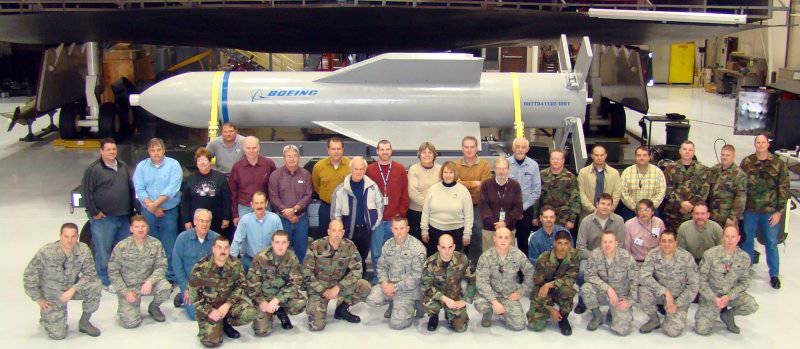
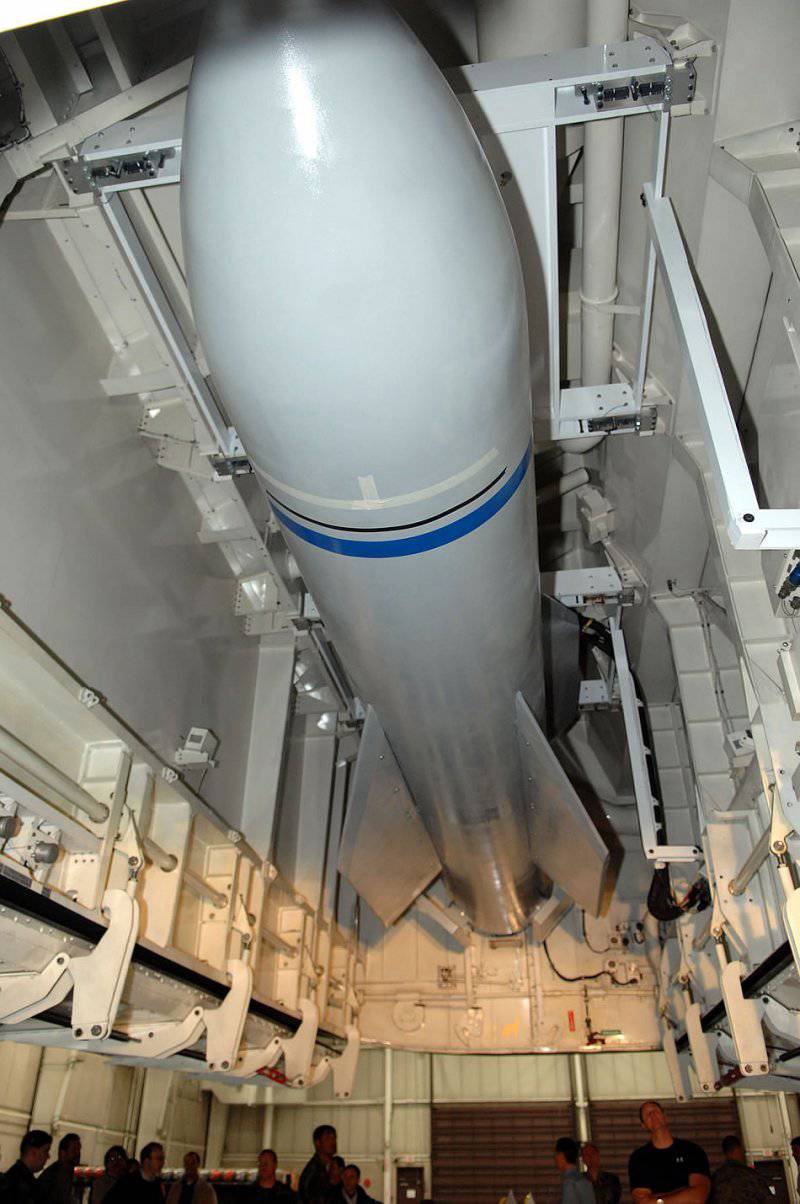
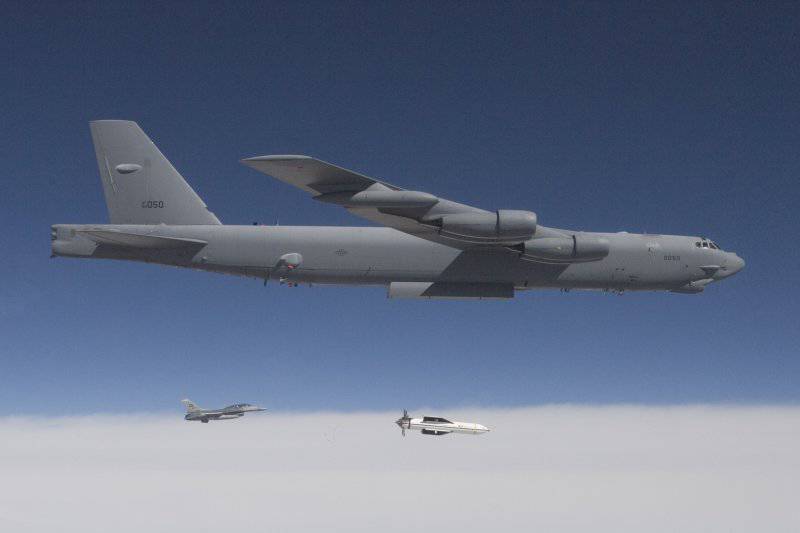
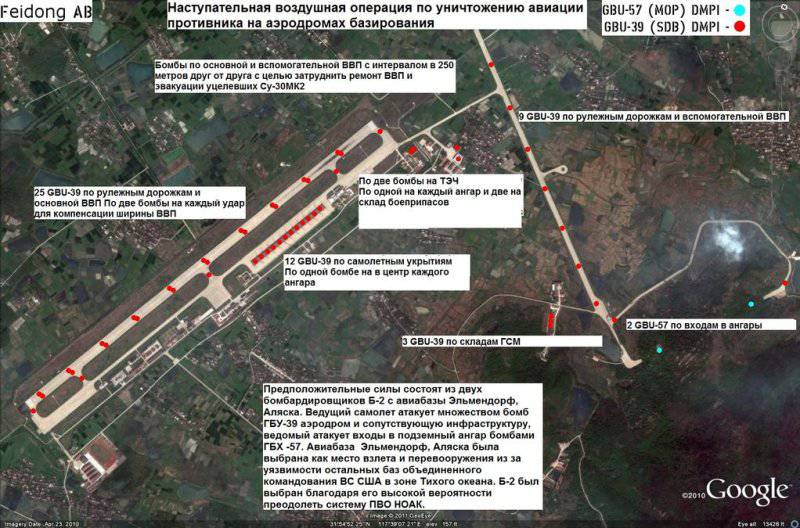
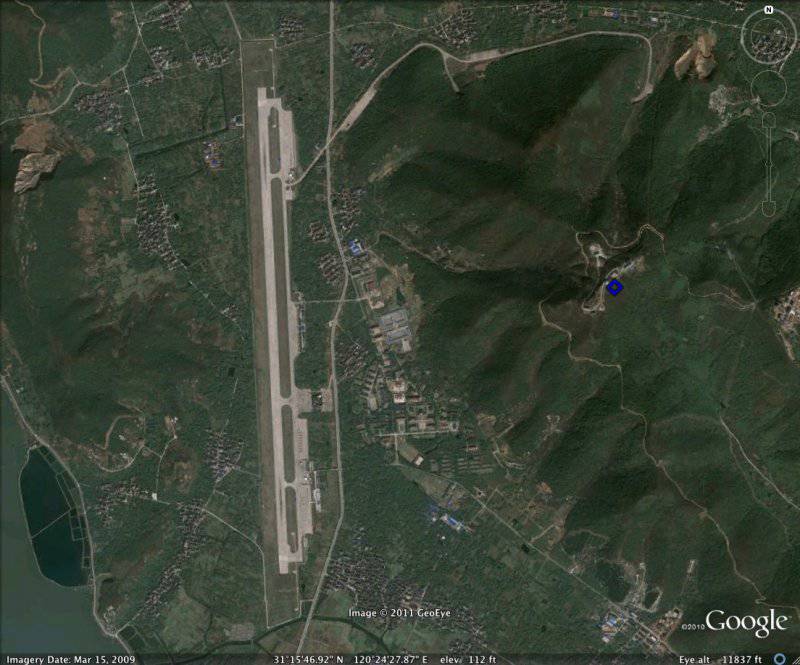
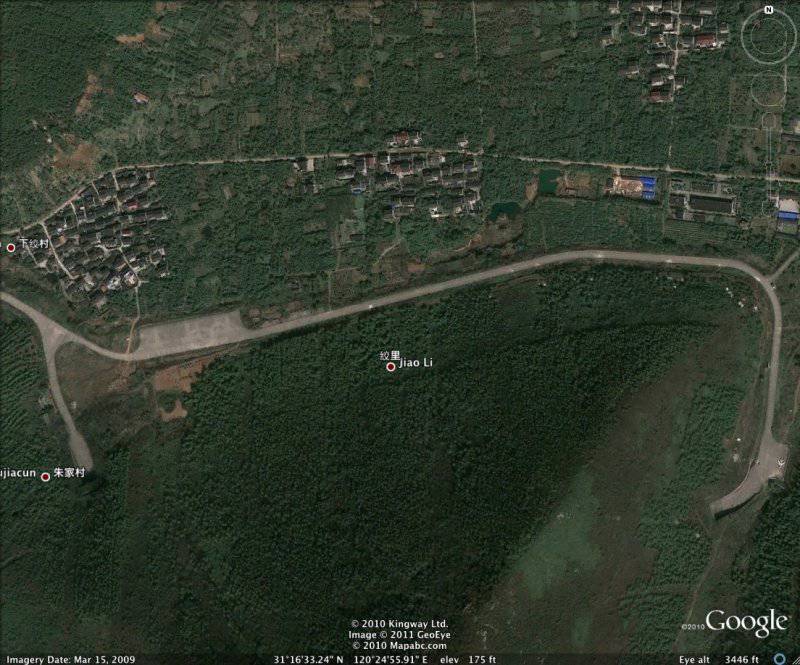
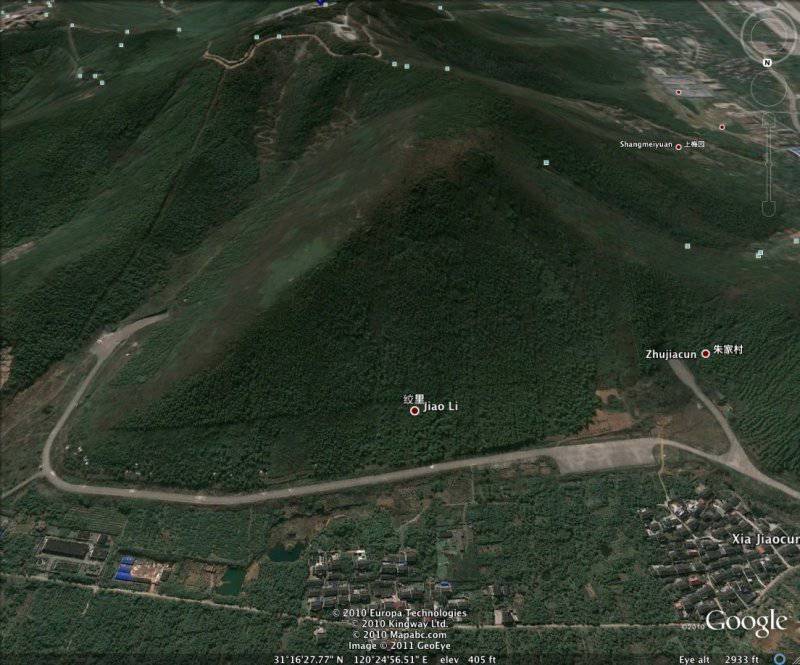
Information